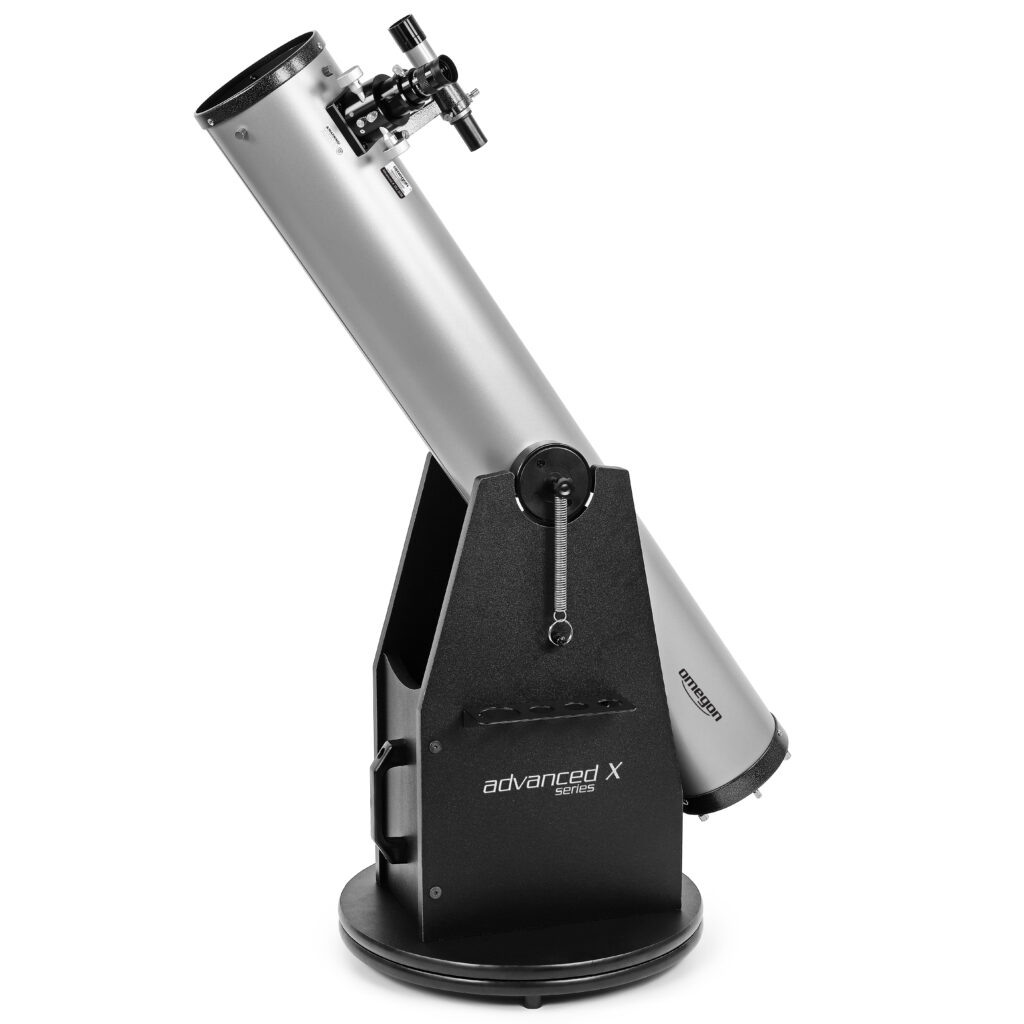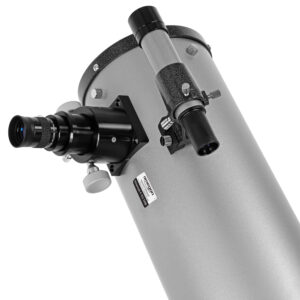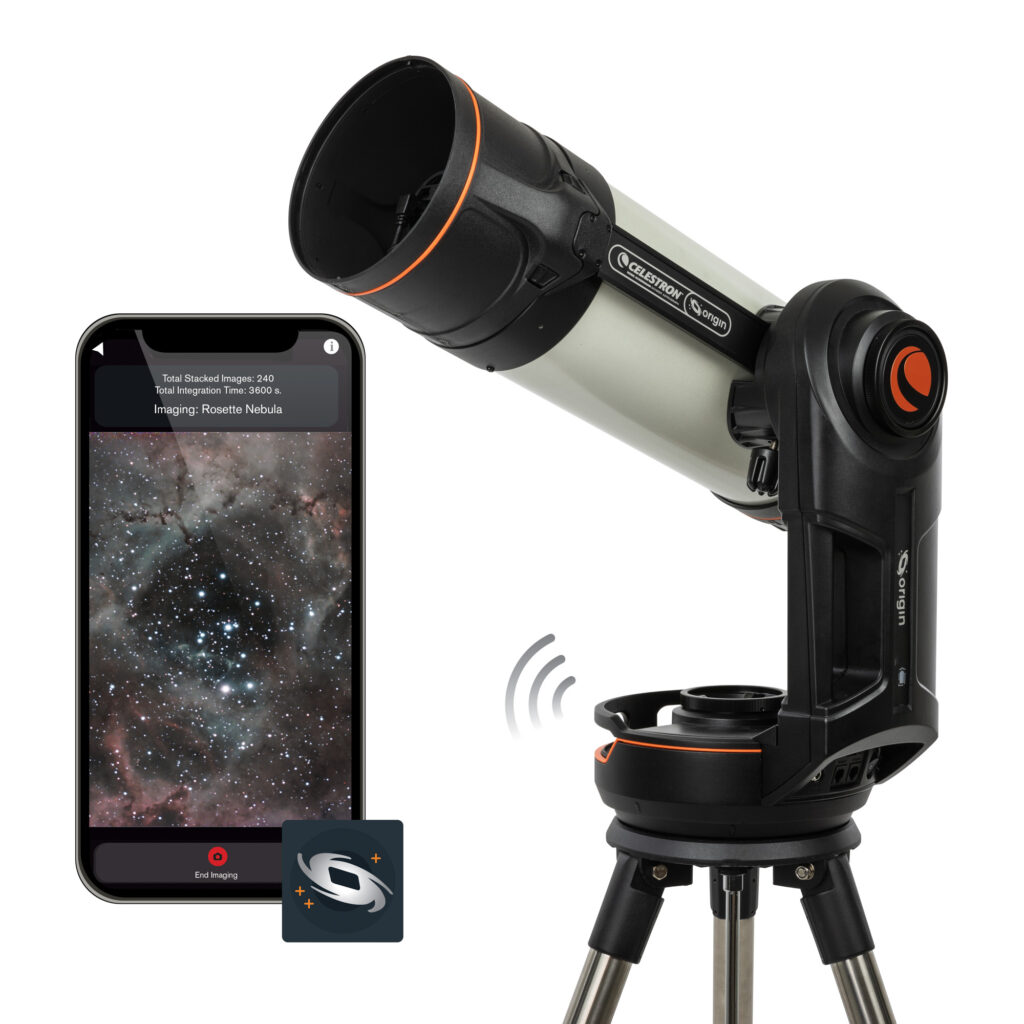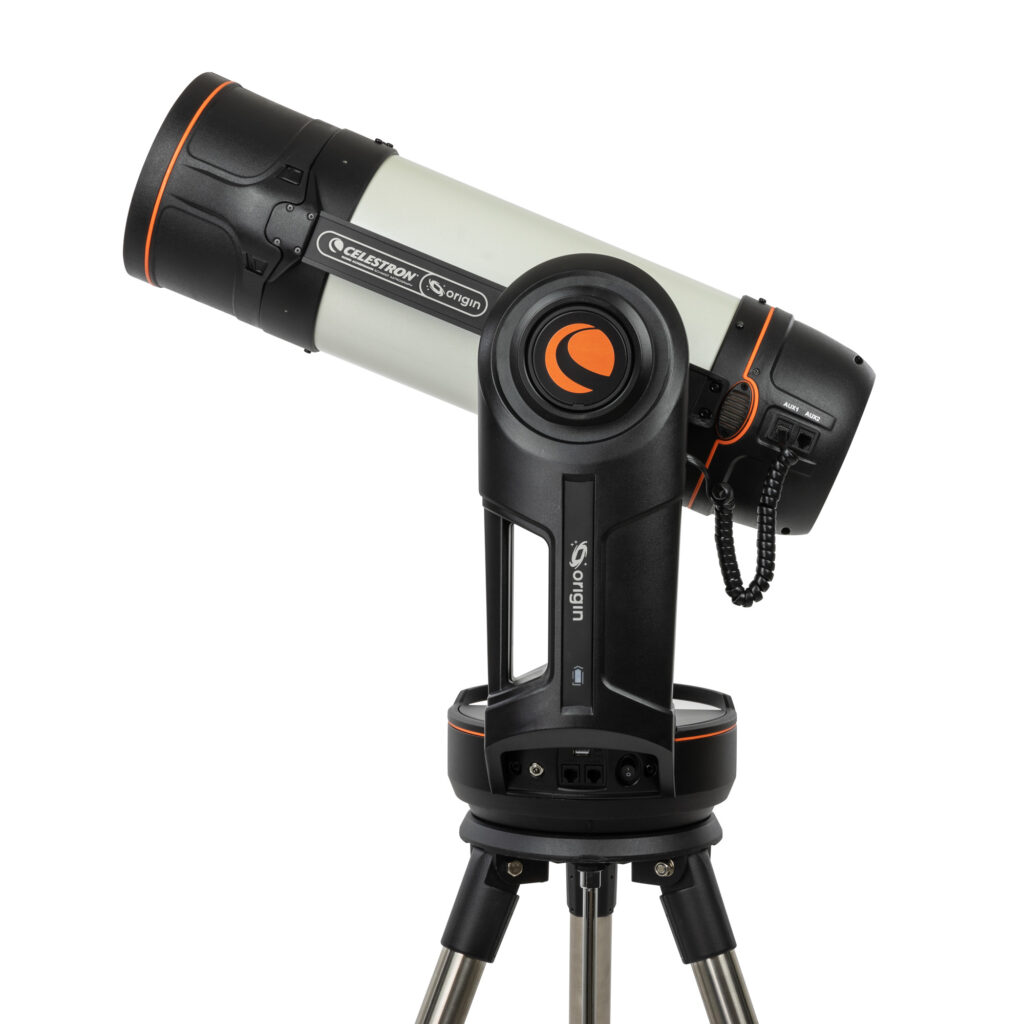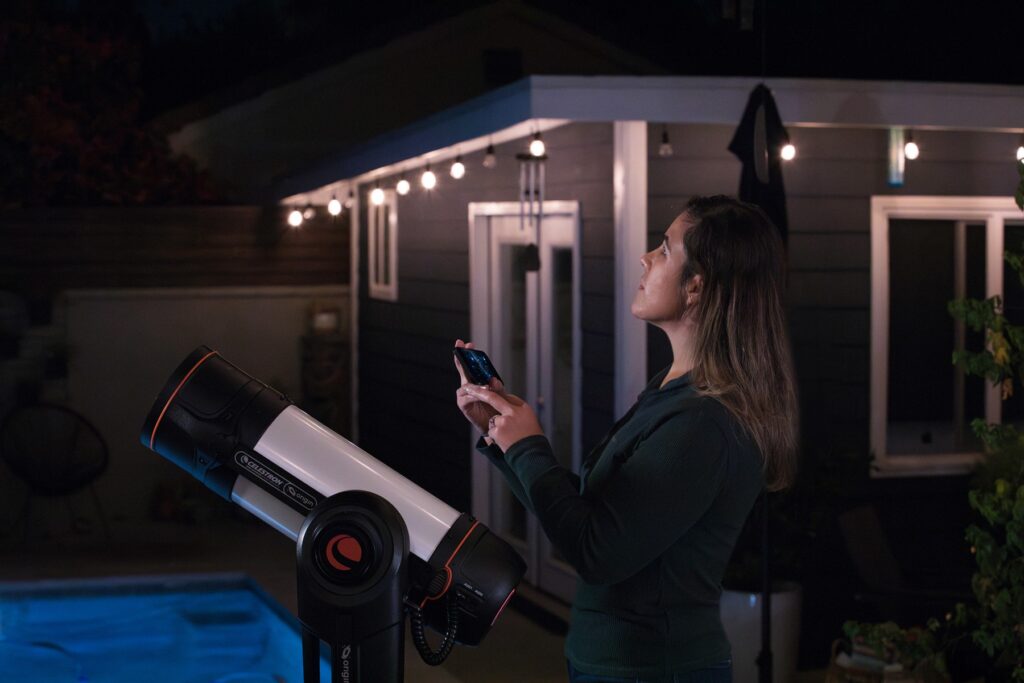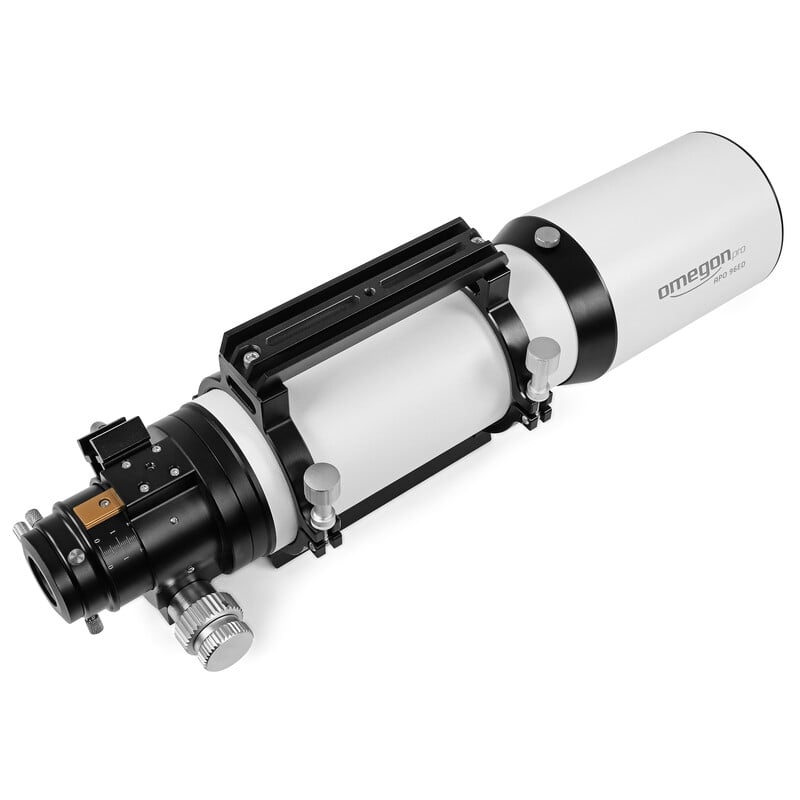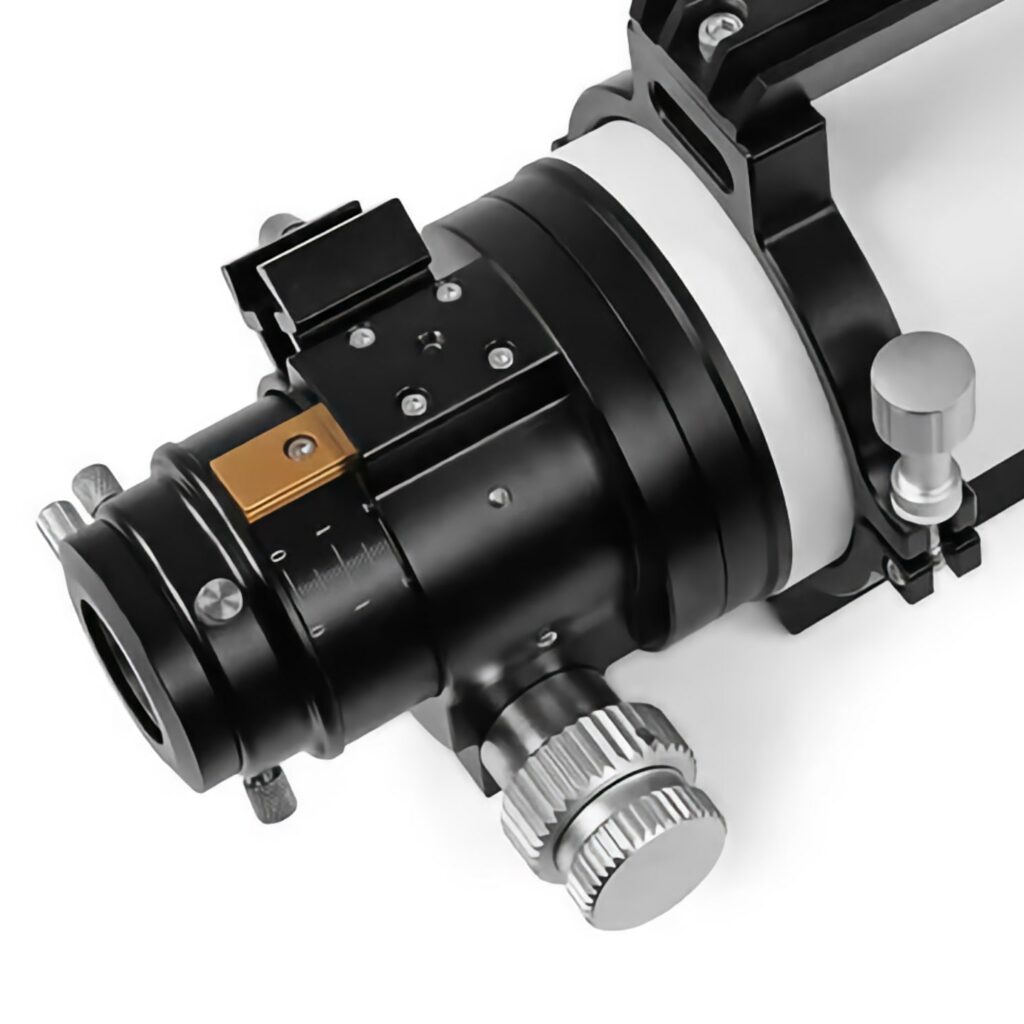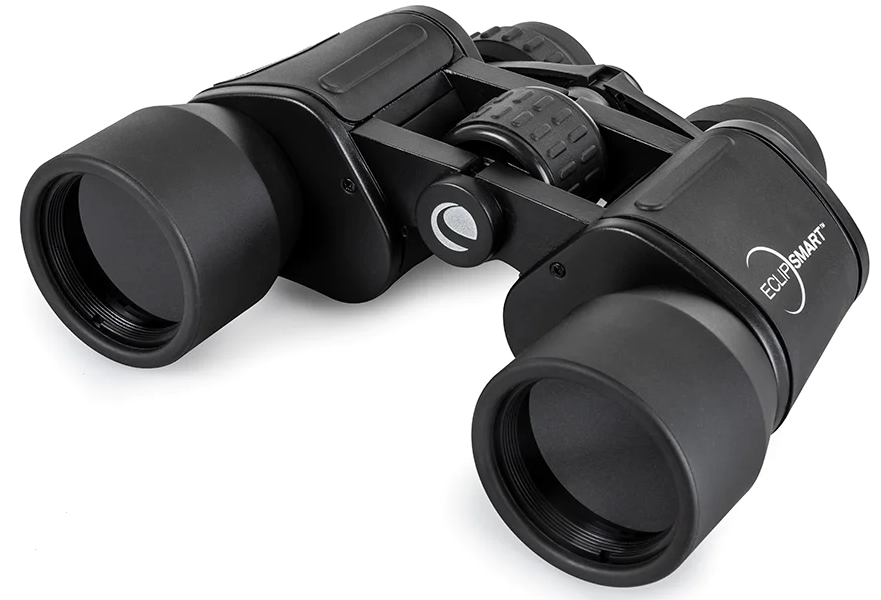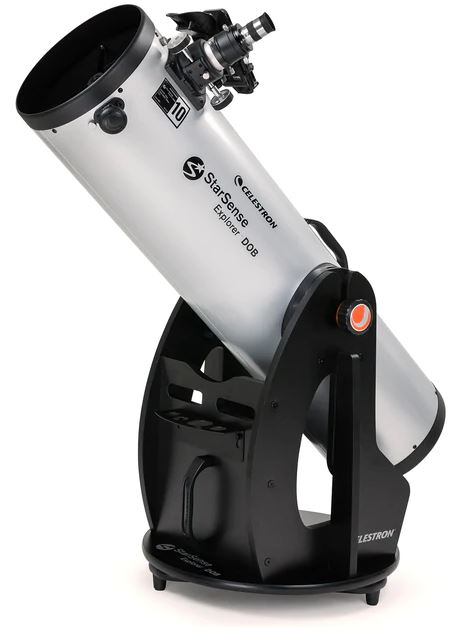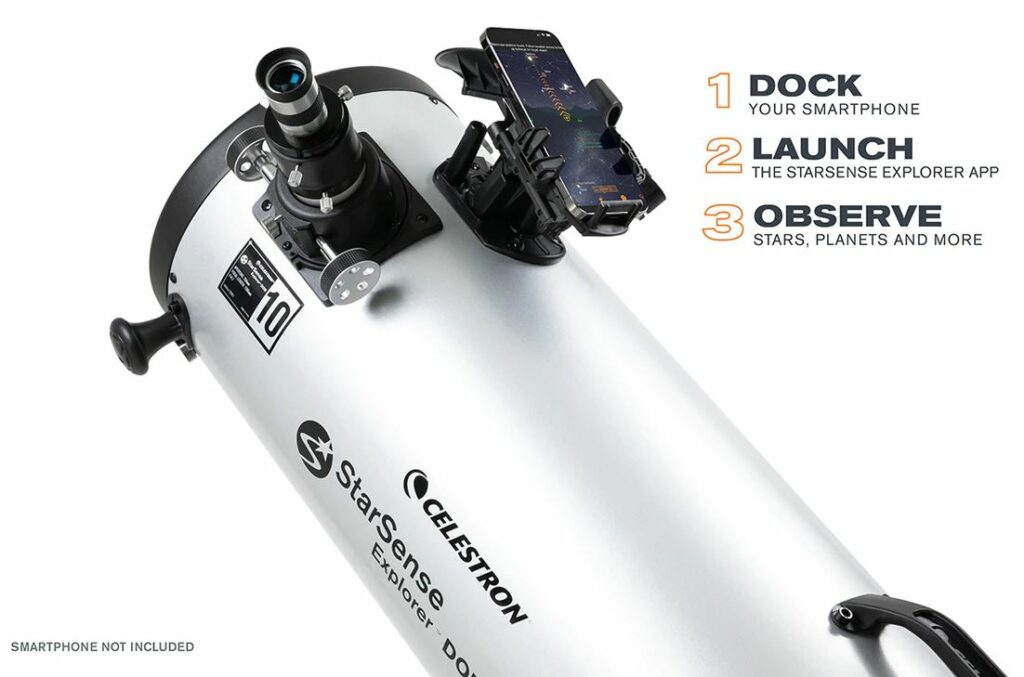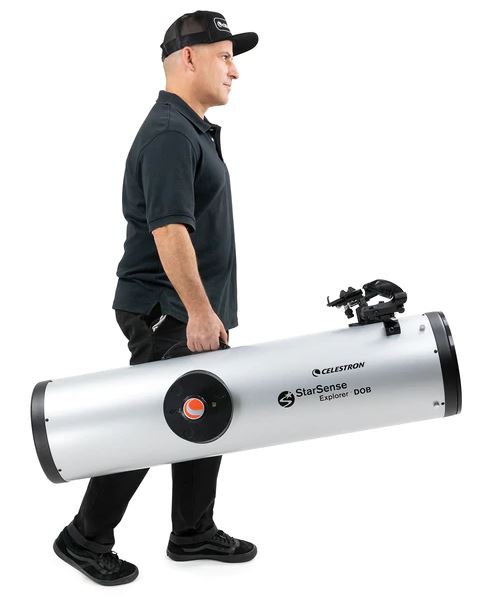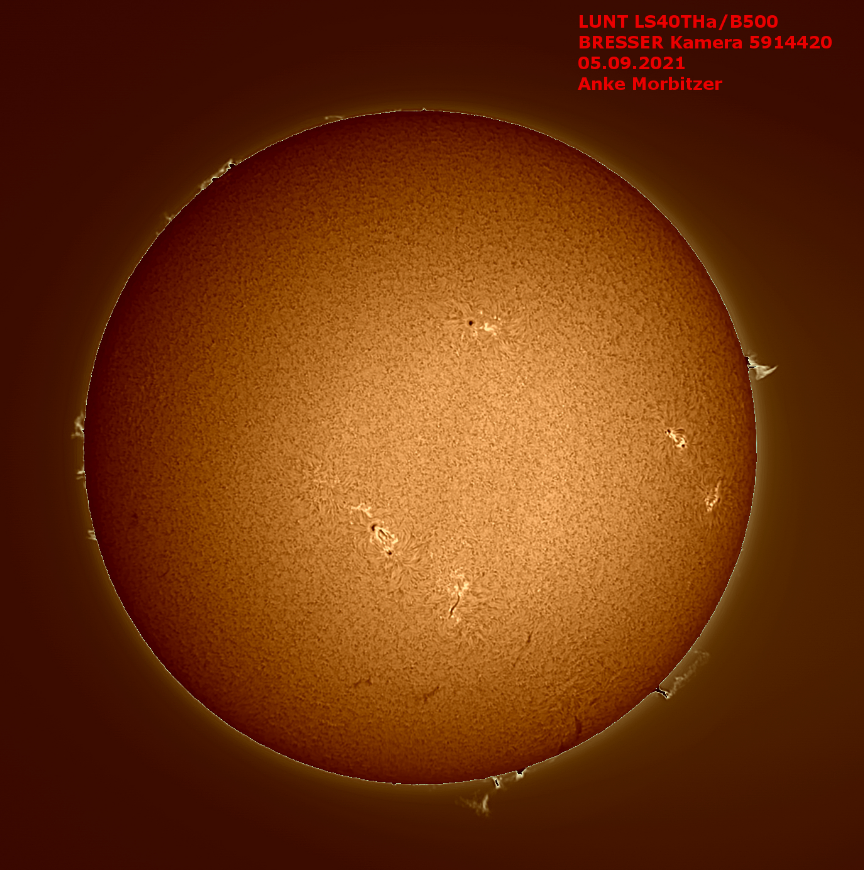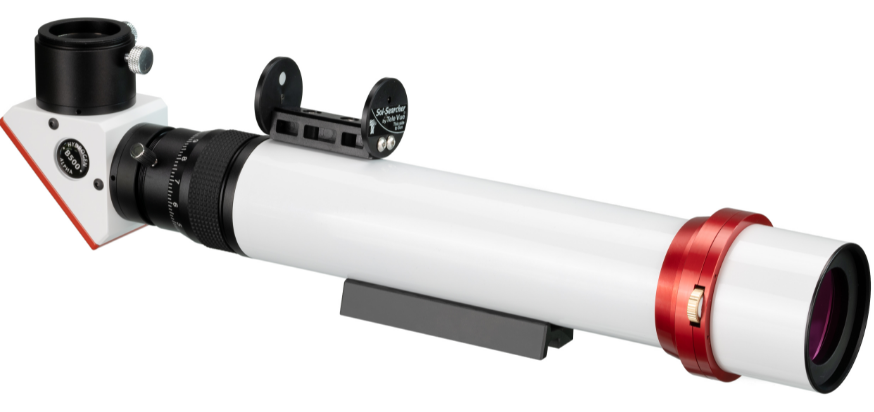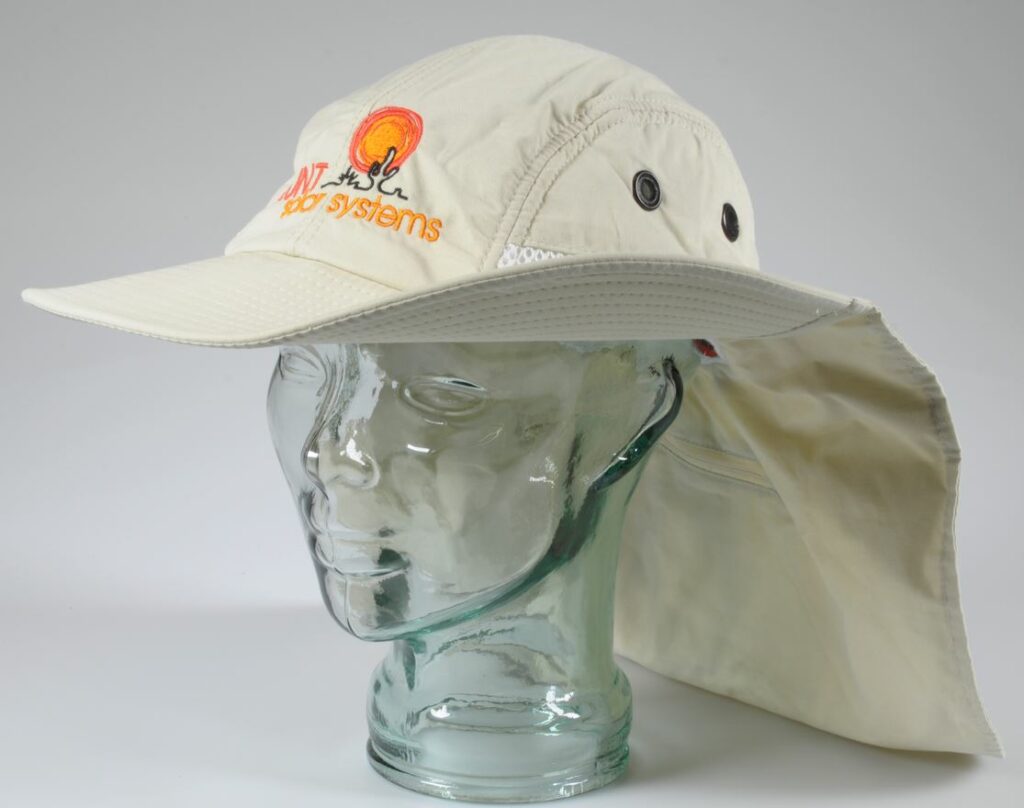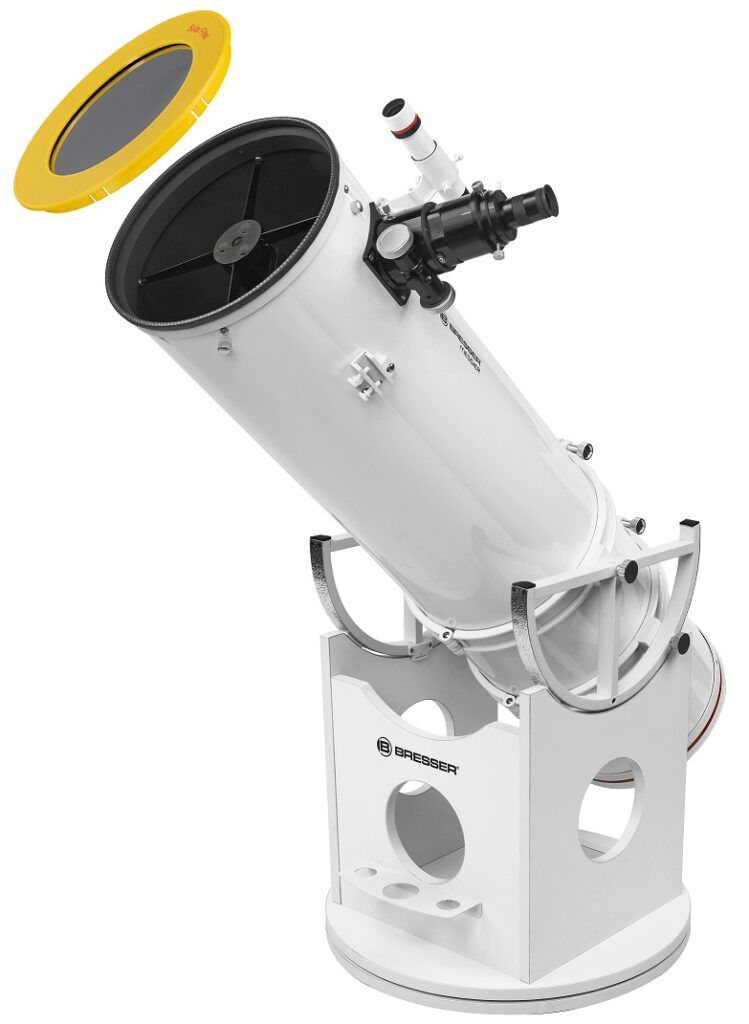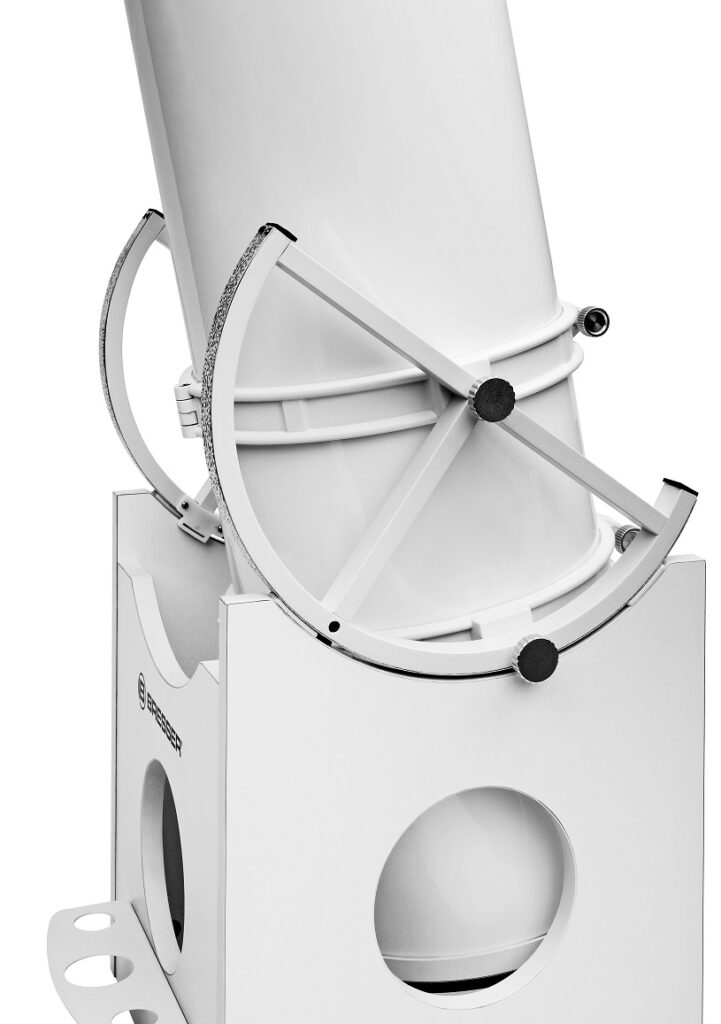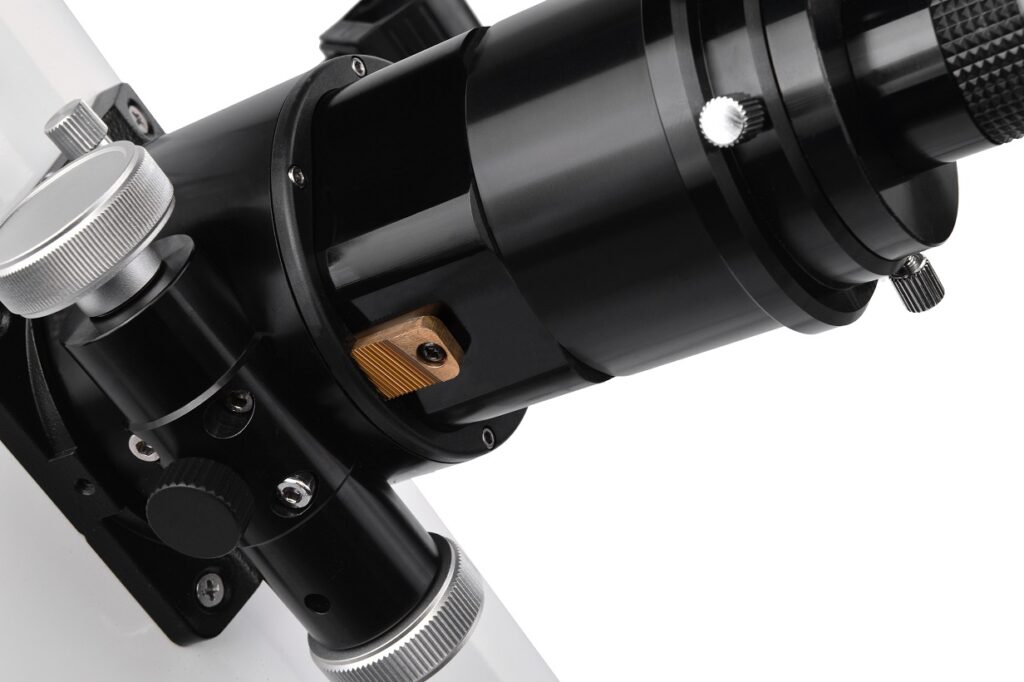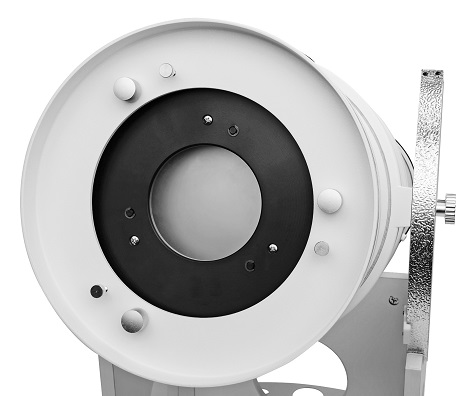The Omegon-Dobson family has grown. The Advanced X N 152/1200 telescope expands the “Advanced X” series with a high-quality, yet affordable model.
With a mirror diameter of 152 millimeters, it collects enough light to see even distant galaxies. The slim telescope shows its strengths primarily when observing planets and star clusters. The focal length of 1200mm makes it easy to achieve slightly higher magnifications. The included 25 mm eyepiece gives 48x magnification, with additional eyepieces a range of 30x to 240x is usable. We particularly recommend the Premium Flatfield eyepieces as accessories.
Sometimes at high magnifications you can see the flickering of the air, but there are nights with perfect “seeing” – and this telescope is made for them. As a Dobsonian telescope, it consists of two parts and is ready for use in just six steps:
- First set up the so-called rocker box (8 kg),
- Place the optical tube (9 kg) in the rocker box,
- attach springs on sides,
- slide in the finder scope,
- insert eyepiece.
- Don’t forget: remove the lid 😉
This only takes a few minutes. So it is possible to simply peek through a few gaps in the clouds every now and then. The good-natured design is also suitable for use all night long – the telescope can easily handle dew or frost.
Because it is intuitive to use and really robust, the instrument is highly recommended for children aged 10 and over.
Like its larger siblings in the Advanced X series, the N 152/1200 can also be retrofitted with a digital “sky navigation system”, the Omegon Push+ Go system. The 6×30 finder scope is the classic way to find the objects – in combination with good celestial atlases .

